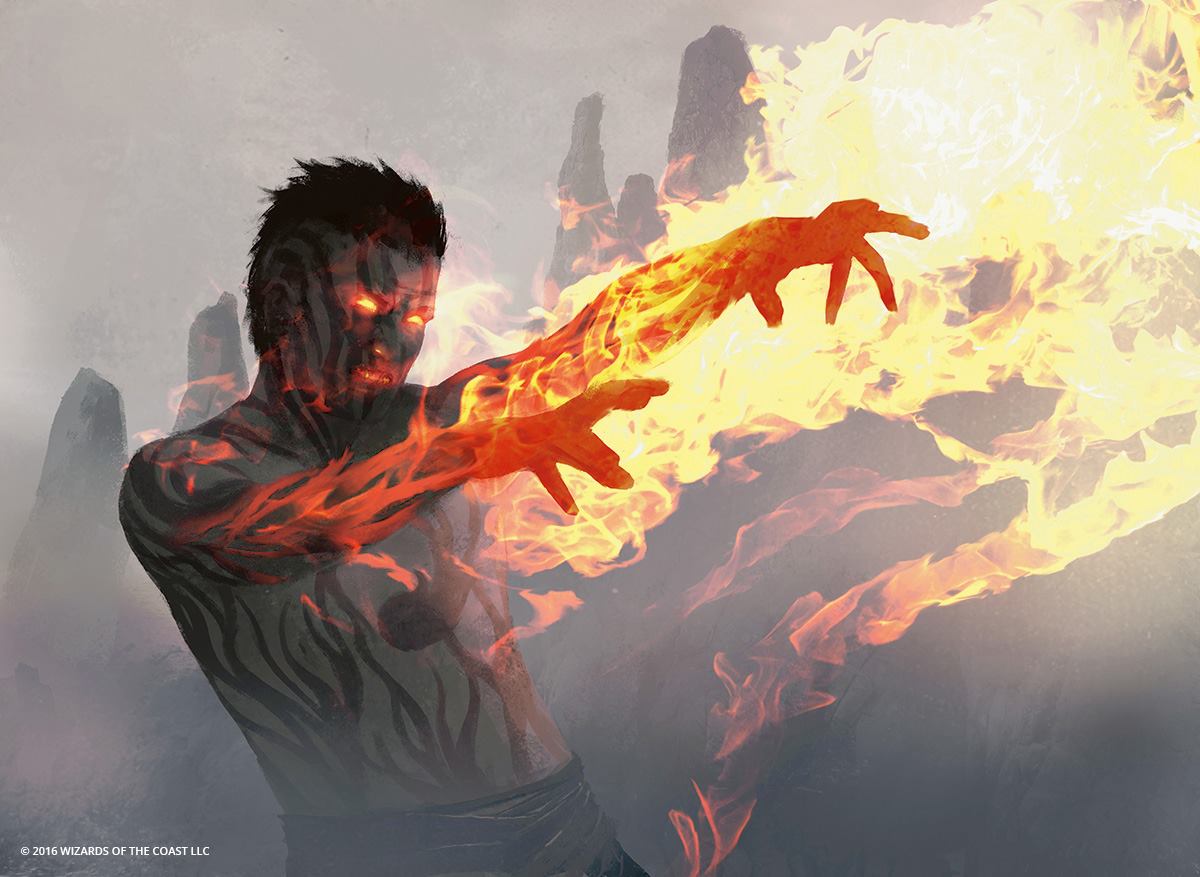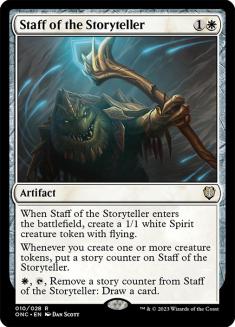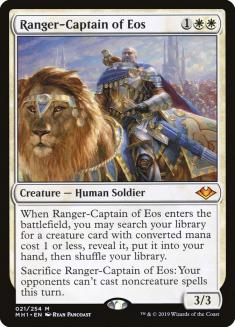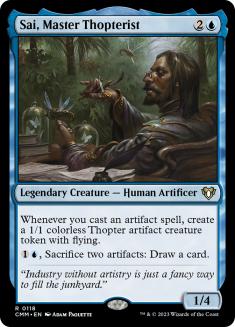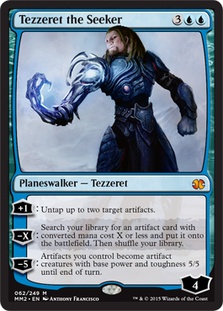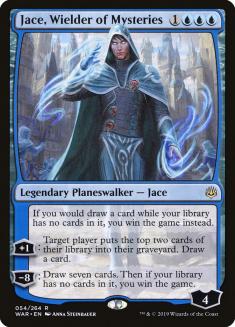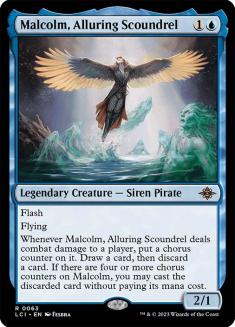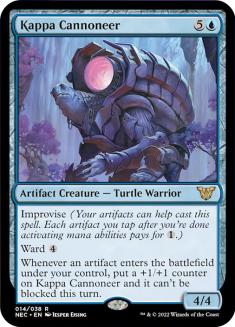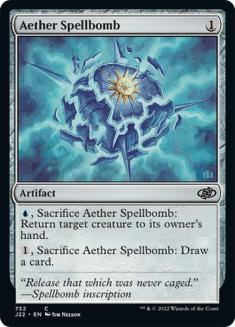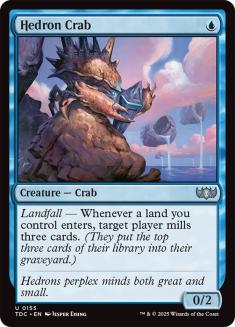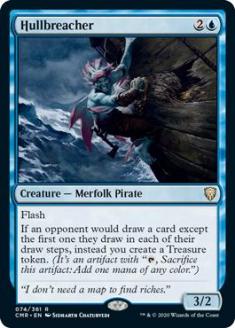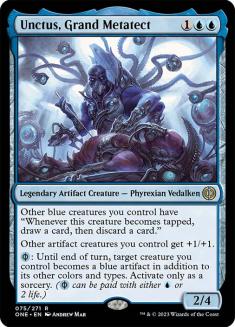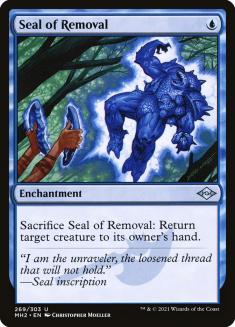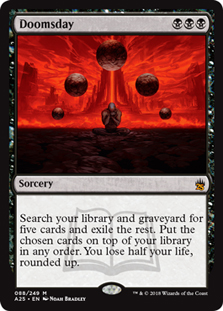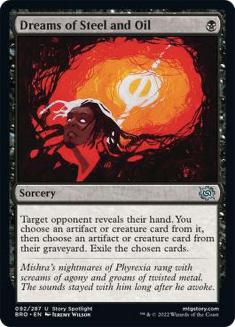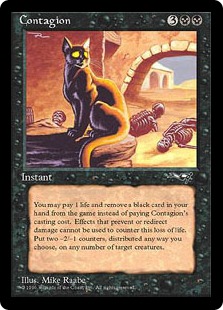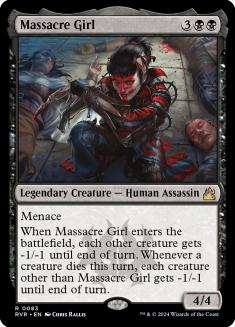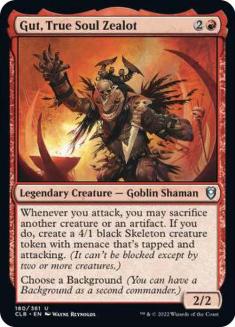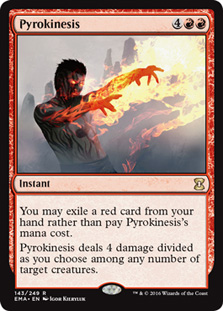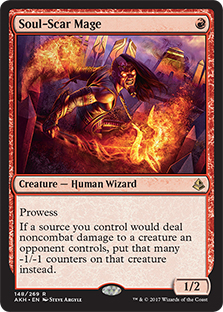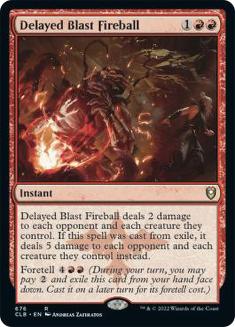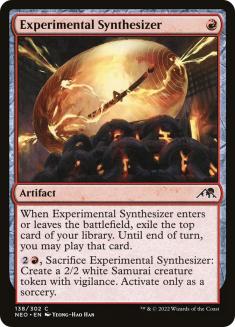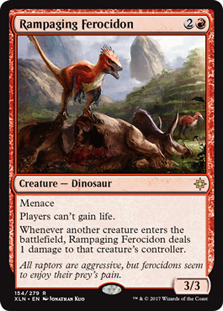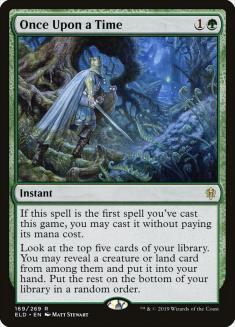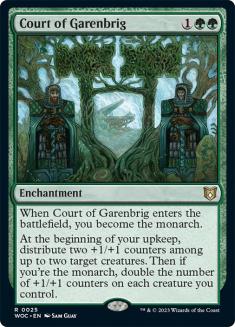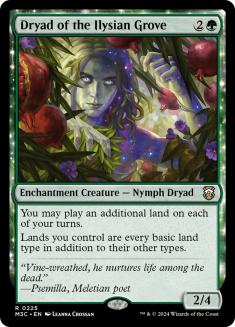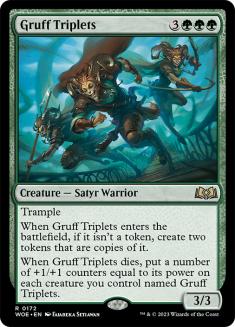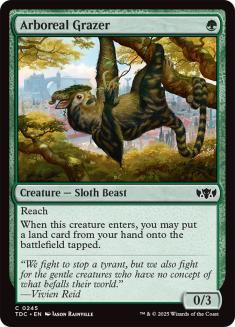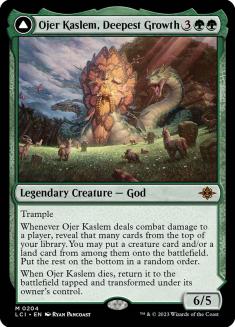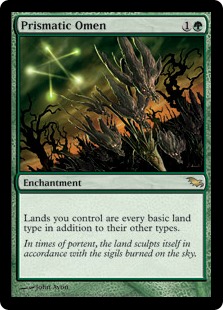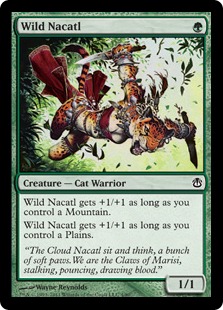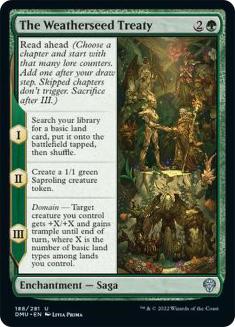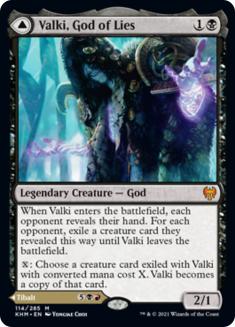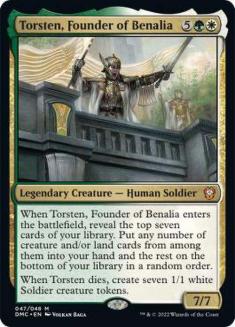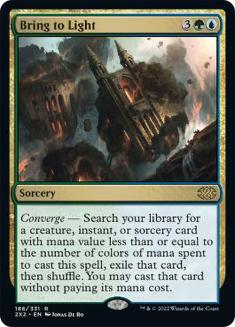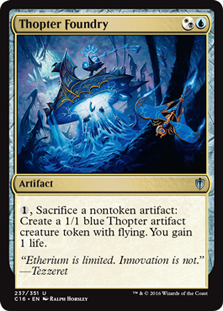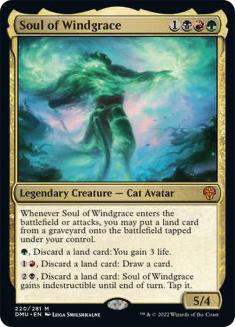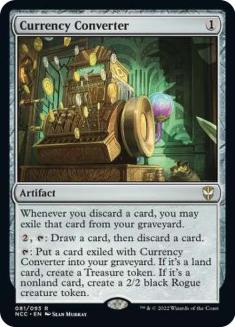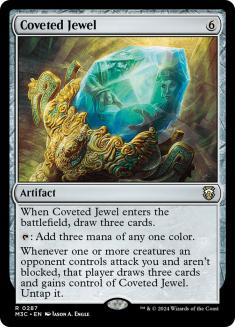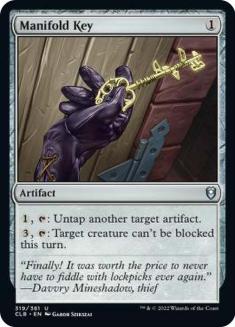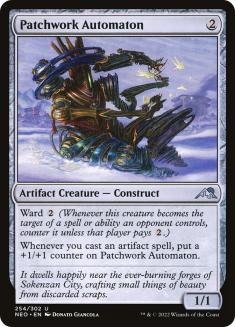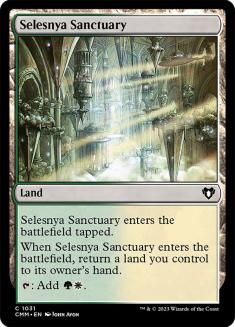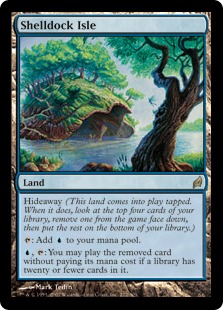Hello, gamers! After a five-and-a-half-week run of the Vintage Cube on Magic Online (MTGO), some of us may be feeling like we got a little too much candy this holiday season. Personally, I love the idea of having a digital Cube on MTGO near every day of the year, though this run did suffer some from featuring a lot of experimental stuff that had a little too much time to breathe. To the extent that I wish I could have fired up a Cube on MTGO last night, I am definitely feeling that it’s time for an updated list.
Some of the updates in the massive changelog for this run fell a little flat for me, though there were absolutely some new high notes for the Cube as well. Today I’ll break down the Cube by color, going over what I liked, what I didn’t like, and offering some thoughts on the direction that I would like to see the Cube move. This was the inaugural run for the “packages” concept of cards coming in and out of the Cube in clusters, and I’m curious to see official statements from the curators on how they feel that went and the future of the Cube in that regard, but for today my focus will be directly on the Draft experience. Let’s dig in!
White
What I liked:
I suppose I should start by saying that I don’t dislike every card that I’m not expressly saying that I like. I like Kytheon, Hero of Akros and Samwise the Stouthearted and Luminarch Aspirant; they just don’t alter the texture of the Cube in any meaningful way. Staff of the Storyteller and Ranger-Captain both carve out unique space. I like the way that Staff subsidizes Skullclamp, which often feels too weak for Vintage Cube while being too strong for anywhere else. I’m all for cards that gas Skullclamp up a little and put some shine on more aspects of Magic’s broken history in Vintage Cube.
Ranger-Captain of Eos is another tool that helps aggressive decks battle back against stuff like Underworld Breach, and with my position being that Vintage Cube should generally push to the extremes of power level, stuff like this is necessary and good for minimizing fully lopsided matchups. There was a time not long ago when Mono-Red and Mono-White Aggro were the winningest archetypes in the MTGO Vintage Cube, and the current list still shows some effort to scale these decks back. I like Ranger-Captain and similar cards being hostile to other, more powerful archetypes in the Cube to give aggro some love. Which brings me to…
What I didn’t like:
I’ll be using images to reference cards that I didn’t like throughout this article, but what I didn’t like in white has more to do with cards coming out and cards that have been around for a while that have stayed in. When I think about the direction I want for white in Vintage Cube, I think about how Legion’s Landing is better than half or more of the current one-drops in the Cube, and how I see Sevinne’s Reclamation go last a lot and have never been excited to see it cast. This update intentionally cut support for Mono-White Aggro with the removal of Student of Warfare, a sentiment I hope to see reversed in the future.
I’ve been a fan of Forth Eorlingas! and the increased power level of multicolor aggressive decks recently, and I think it’s great that there are exciting gold aggressive cards. What I don’t like is incentivizing every aggro drafter to play multiple colors. Fetchlands are among the most contested cards in the Cube, and having some draft lands that get to avoid fighting for them increases player agency. It’s exciting to open Forth Eorlingas! and it’s worth fighting over mana-fixing when you do, but it is comparatively unfortunate to fight over mana-fixing so that you can splash Tenacious Underdog to have enough playables.
Mono-color aggro is also just an approachable and comfortable draft lane for less-experienced players, and I would err on the side of gassing up Mono-Red and Mono-White more than worrying about either being “too good”. I’m certain that the win rates of aggressive decks in Vintage Cube are meaningfully padded by the fail rates of players who don’t quite get there when they try to do something fancy more so than the power level of these archetypes or any individual card, but I digress. For these reasons, I would like to see more support by volume and on an individual card level for mono-color aggro in the future.
Blue
What I liked:
I found blue to be the most improved color in the Cube for this run, with Tolarian Academy decks being by far the land I was happiest to occupy. I also love Malcolm, Alluring Scoundrel as a looter that occasionally offers a nice big-mana payoff. While I never drafted Doomsday myself, I happily played Jace, Wielder of Mysteries in enough decks that I like what that package adds to the Cube broadly.
The subtext of blue being the most improved color for this run is that the previous changelogs under Daybreak were pretty actively hostile to blue. I’m glad to see some course correction here, but there are still some aspects of the list that I would like to see changed.
What I didn’t like:
I’m sure I sound like a broken record at this point, but Hullbreacher just isn’t fun to have around. And if it is so fun, then why isn’t Opposition Agent in the Cube? I also find it odd to be pro-Hullbreacher and anti-initiative. I’d be a lot more okay with Hullbreacher if you at least gave me White Plume Adventurer as a fun proactive tool! I also find the card far more egregious than Time Vault. Anyway, I’ll stop beating that dead horse… for now.
Hedron Crab and Unctus, Grand Metatect were both weak, though more than that they speak to a macro-issue that I had with this iteration. The Cube moved in several very parasitic directions all at once and made the drafting experience feel really specific. Many of the cards were for specific archetypes or combinations, which is fine when they’re best in class but becomes irritating when you know what you’re supposed to do with Unctus but the card just sucks in the role. Notably, this is similar to how it felt to be more forced to play multiple colors in aggressive decks with the option to be mono-color being less supported.
Seal of Removal and Snap weren’t new cards for this iteration, but they were new additions under Daybreak, and my disapproval of each has only grown over time. I thought Aether Spellbomb was a great call as a tool for Urza’s Saga and Trinket Mage, and having an Unsummon that I liked only made the issue of the weaker Unsummons louder. These cards also speak to the issue of specificity, albeit in a more indirect way. While these cards have claimed slots, a number of generically powerful blue cards have been removed from the Cube.
Consecrated Sphinx; Mulldrifter; Venser, Shaper Savant; Fact or Fiction; and a handful of other cards aren’t what they once were, but they are still powerful enough to play in Vintage Cube decks that can generate blue mana. The heavy push on artifact decks, combined with the presence of generically weaker cards, has made it more difficult to play a blue deck that isn’t some form of artifact or Time Walk deck.
I also want to call out Paradoxical Outcome, which I have generally found to have low value over replacement the entire time it’s been in the Cube and also found to be much weaker in this run with the trimming of some Talismans. The average blue deck would be much happier to just have Fact or Fiction. A little more generic power, much like support for the mono-color aggro decks, goes a long way in increasing player agency and comfort. The draft experience is better when there are more Glen Elendra Archmages and fewer Unctuses.
Black
What I liked:
First, I want to own up to Dreams of Steel and Oil being much better than I gave it credit for. There are enough artifacts and creatures in the Cube to make it generally live, and the graveyard hate is a fine cherry on top. It doesn’t line up with my drafting preferences and I don’t recall casting the card myself, but I watched enough other drafters put it to good use and even draft it highly to eat crow on this one.
I should also say that Bitter Triumph and Deep-Cavern Bat are both great, but like I mentioned above, I want to try to focus on cards that have heavier impact rather than just nuts and bolts. I never drafted Doomsday, but the idea of doing so still excites me, and I’ve heard reports of players drafting very fun trophy decks with the card. There are plenty of black slots in the Cube that don’t add nearly as much value.
What I didn’t like:
Massacre Girl over Massacre Wurm is a specific slot change that advocates the Cube moving in a more midrange direction, which I’m firmly against doing with a heavy hand. The last several years of Magic design have already pushed the Cube in this direction organically, and there’s no need to sub in weaker cards to solidify this. A significant percentage of players already love jamming Questing Beast, and you really don’t need to do anything more to appease them.
I saw Contagion go late very often while drafting, and when I ended up with the card, it always started in the sideboard. My issue with the card isn’t that it’s situational, though; it’s that it’s specifically powerful against decks that have taken enough hits otherwise. The aggressive decks have really been pushed in a midrange direction lately, and Llanowar Elves and company have also suffered hits, and a free spell that is specifically good against these decks that are struggling enough on their own is a pretty negative addition from my perspective.
Black is actually the exception to the problem I have with the Cube being too specific in this iteration, and indeed the problem with black for many years has been that it does two things really well – Storm and Reanimator – while it also fumbles around in other spaces. The AlphaFrog Cube addressed this by going really hard on Reanimator, which is desirable in some ways and undesirable in others. For better or worse, I drafted Reanimator a lot and was much bigger on drafting black in that Cube than this one. Whatever the answer is, I think black would rather have Beseech the Mirror and Wishclaw Talisman than to keep holding onto cards like Evolved Sleeper that just don’t fit the environment well.
Red
What I liked:
My initial review of this update was cold on Pyrokinesis, which came from the perspective of a Mono-Red Aggro apologist. I never drafted nor felt incentivized to draft Mono-Red in this run, so I stand by my assessments there, but I came around a lot on Pyrokinesis as a strong control card.
It does occupy space similar to Contagion, but the fact that it’s strong against a wider range of creatures puts it over. I don’t think that sweepers are too powerful for Vintage Cube by any means, and Pyrokinesis actually just feels powerful, which makes it a better fit for the Cube, even if it is hostile to all of the same things that I don’t love Contagion for being hostile towards. It also matters that decks that are long on red cards are more in need of a shot in the arm than decks like Reanimator, which really don’t need to be hating on Usher of the Fallen.
Gut, True Soul Zealot was perhaps the breakout card of this iteration, scoring high praise from many notable Cube enthusiasts. The card occupies similar space to Broadside Bombardiers, and I hope to see both in the next iteration. Mono-Red definitely took a big hit in this run, but splashing Gut proved to be a powerful option for aggressively-inclined players.
What I didn’t like:
Experimental Synthesizer is theoretically a cool card to pair with Goblin Welder, but I often saw it go late and never wanted it for any of my decks despite my preference for artifact decks otherwise. I would much rather get Mono-Red Aggro’s ducks in a row before messing with any of that, which Rampaging Ferocidon and Soul-Scar Mage simply don’t do. I’m a bigger fan of Soul-Scar Mage than most, but the card is simply worse than Goblin Guide in Vintage Cube, the card that it supposedly was an upgrade of.
I almost liked Najeela, the Blade-Blossom. If you control a Warrior or two when you cast Najeela the card is actually great and snowballs very quickly. The card just suffered too much from the specificity and parasitism of the Cube by asking players to play specifically Naya Aggro to really make it work. Even something as small as swapping out Soul-Scar Mage for Zurgo Bellstriker would go a long way in making Najeela an exciting option in Vintage Cube.
I found Delayed Blast Fireball to be overly hostile to cheap creatures and not especially useful otherwise. Additionally, having one foretell card in the Cube is just goofy. For Vintage Cube, I would say that the correct number of foretell cards is zero.
Green
What I liked:
I never agreed with cutting Lotus Cobra from the Cube, so credit where it’s due on reversing that mistake. I’m not as big on Once Upon a Time as a lot of players, but there’s a lot about it that screams Vintage Cube, so I like seeing it here, even if I’ve yet to draft it. I generally dislike Dryad of the Ilysian Grove for Vintage Cube, but this was the first run where I thought the card was actively good, so kudos there for putting some shine on a card that used to be quite contextually weak!
Gruff Triplets overperformed relative to my expectations, but I do wish that Worldspine Wurm stuck around alongside it because I think Flash needs more things, not just the most preferred specific thing.
What I didn’t like:
There were some good things going on with Lands in this iteration, but again I come to the notion of things being too specific and parasitic. I actually am kind of okay with Sakura-Tribe Scout, but the one-time effect of Arboreal Grazer is absolutely overkill here. I liked Dryad, but Prismatic Omen is similarly overkill and a much weaker card. Scapeshift might be worth a slot, all things considered, but it sure seemed like it went late and was only good when the over-supported and generally undesirable Lands lane was super-open, so it’s difficult for me to give the card much praise.
Wild Nacatl and Nishoba Brawler are additional aspects of the Cube that ask aggressive players to fight over mana-fixing, and Ojer Kaslem, Deepest Growth goes too far in pushing players to play midrange decks. There are a lot of green fives cut from the Cube in recent memory that do something impactful without specifically needing to attack, and the ask is just too big on that one.
Mostly, what I didn’t like about green and why I generally avoided it this run is that the current list is so hostile to mana creatures. If you ever had the audacity to control two such creatures, you could bet that an Arc Trail was about to come your way! This is another way that the Cube list was pushed a bit too midrange-y, in that players were significantly incentivized to play creatures that didn’t just get scooped up by all of the conditional removal and sweepers present in the list.
Gold
What I liked:
I actually found using Bring to Light to cheat Tibalt, Cosmic Impostor onto the battlefield to be one of the coolest aspirational aspects of this update, and I chased it for many drafts. I had an absolute blast when I finally pulled it off!
There were other likeable gold cards among the additions, though Thopter Foundry was by far the most noteworthy for my money. It is still questionable whether you want to use two slots on cards that don’t do much at all on their own, but the combination proved to be a powerful option to keep your eyes open for in practice.
What I didn’t like:
There were other weak gold cards in the spread, but Soul of Windgrace upset me to see in a pack. I never saw anybody cast it and it always went late in drafts. It’s another Unctus-type card that is technically there for the Lands deck but is just too weak to ever matter. Meanwhile, Leovold, Emissary of Trest was cut to make room and was another of those Fact or Fiction type cards that is just strong enough to make decks that the Cube was short on categorically this iteration.
Colorless
What I liked:
I fell in love with Currency Converter and Coveted Jewel during the AlphaFrog run, and I was happy to see them here. I was skeptical of Manifold Key absent Time Vault, but there are just enough powerful artifacts to untap that the card really overperformed for me when I had it in my artifact decks. It is ultimately likely too parasitic/specific, but it did at least play well when wanted. Though I would prefer to see Time Vault in the Cube alongside it…
What I didn’t like:
There were other cards that I wasn’t huge on, but Patchwork Automaton was the full-on miss in the colorless column for me. It gives off big Unctus vibes, and several colorless cards that were cut for this run would do more in terms of either offering generic power or specific support, which are both preferable in Vintage Cube to adding weak cards just to get there on volume.
Lands
What I liked:
Cutting Shelldock Isle was another mistake that I’m glad to see taken back. I’m not sure what the ideal number of bouncelands is for the Cube, but four green ones is probably a reasonable number. To the extent that I feel there was too much Lands stuff going on in the Cube, playing the bouncelands with ways to play extra lands did at least offer meaningful mana acceleration. I could go either way on Valakut, the Molten Pinnacle, but it seemed to offer enough joy to be worth trying out in an iteration with less heavy-handed support.
What I didn’t like:
Sunken Ruins didn’t thrill me, but I wouldn’t really say that there were any lands in the Cube that I minded having in the list. It is bizarre to me that City of Traitors was cut without any meaningful note on its removal in the changelog, and it’s clearly Vintage Cube-caliber to me. Presumably this was part of the push against mono-color aggro, but I would so much rather have City of Traitors in the spread than Nishoba Brawler.
There was some good and bad with this iteration of the Vintage Cube, which is likely to be true any time you take a 100-card swing. I was playing daily or close to it for the first three weeks, though I think I did one total draft the last two. I don’t think that five weeks is too much Vintage Cube, especially when you consider that I was playing the AlphaFrog Cube close to daily in the two weeks leading up to this run! But I will say that it was too long of a run with a static list without allowing for some updates at some point during the run. All in all, I had a blast and there were tons of players in the queues, which was great to see! I’m excited to discover where the Cube goes from here.

